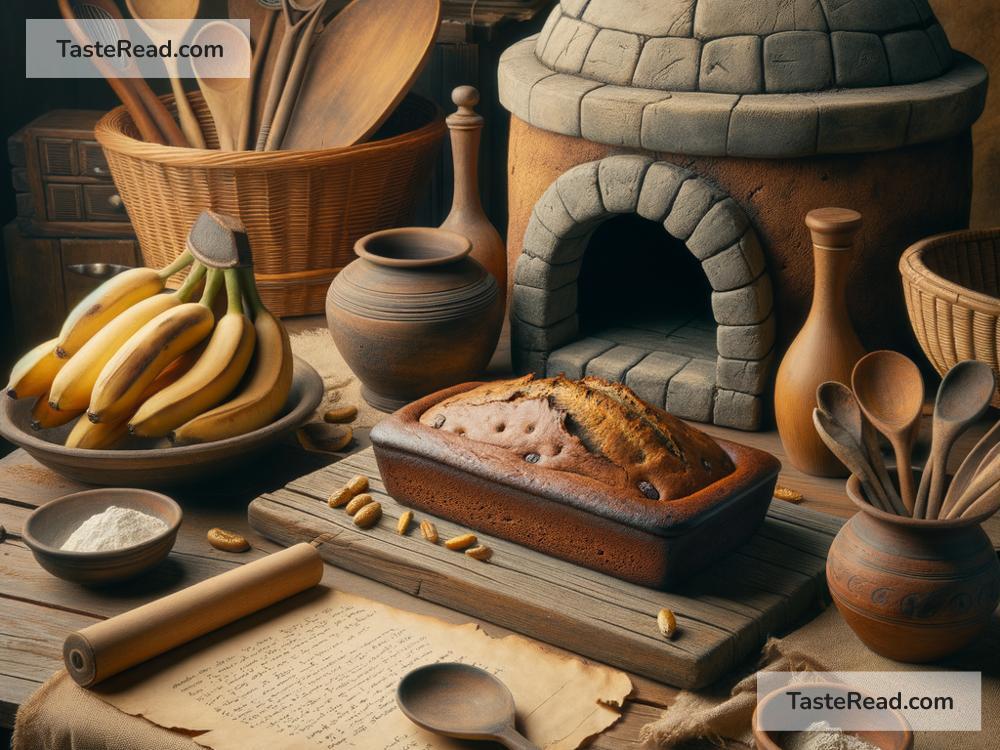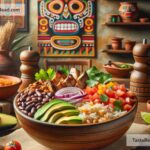The Origins of Banana Bread in Ancient Tales
Banana bread is one of the most loved treats worldwide today. It’s moist, sweet, comforting, and easy to bake. Many people enjoy making it as a way to use up ripe bananas in their kitchen. But where did banana bread first come from? Was it baked in ancient times, or is it a modern recipe? Let’s explore the origins of this delightful dessert and discover how history and myths might connect to its beginning.
Bananas in History
Before we talk about banana bread, let’s first look at the history of bananas themselves. Bananas are believed to have originated thousands of years ago in Southeast Asia. Indigenous people in places like Papua New Guinea were likely growing bananas as far back as 7,000 years ago. Later, the bananas spread across India, Africa, and eventually reached the Americas through trade and exploration.
In many cultures, bananas were celebrated. Ancient texts and traditional stories mentioned them as symbols of health, prosperity, and sweetness. But while bananas were popular, the idea of baking them into bread or cakes didn’t appear right away. After all, many ingredients we use in baking today—like sugar, flour, and eggs—weren’t readily available in ancient times.
Early Legends of Sweet Fruit Bakes
Ancient civilizations had their own ways of creating desserts. In Egypt, for example, people made sweet flatbreads using dates and honey. In Rome, cooks sometimes added fruit to bread dough to make it tastier. These simple desserts showed that early humans loved combining sweet flavors with bread-like textures.
While there are no solid records of banana bread from ancient times, some tales hint at people experimenting with fruit and baking. One legend, shared across Southeast Asian traditions, talks about villagers using mashed bananas to create a sticky, sweet dish. Instead of baking it in an oven, they cooked it over a fire in clay pots or leaves.
Did Ancient Peoples Discover Banana Bread?
There’s no proof that ancient cultures were baking banana bread as we know it today. However, the concept of mixing fruit with baked goods definitely existed. For instance, the ancient Indian dish called “Malpua” involved flat pancakes made with fruit and flour. Could early banana pancakes have been a precursor to modern banana bread?
Another theory is that banana-based sweet breads might have existed in some form, but they weren’t documented because recipes weren’t written down. Imagine a family in Africa or Southeast Asia smashing bananas and mixing them with grains to create a soft bread-like treat. These creations were likely eaten quickly and weren’t seen as “fancy” meals worth preserving in history books.
The Modern Invention of Banana Bread
The banana bread that we know today—sweet, baked in an oven, and often loaded with nuts or chocolate—didn’t appear until the 20th century. This was partly due to bananas being introduced widely to the Western world in the late 1800s and early 1900s. As bananas became more affordable and accessible, people began using them in recipes.
The key moment came during the Great Depression in the 1930s. Families were looking for affordable ways to avoid wasting food, and overripe bananas became the perfect ingredient for baked goods. Around this time, baking soda and baking powder were also becoming popular as leavening agents, making it easier to bake fluffy breads and cakes.
Cookbooks from the 1930s began including recipes for banana bread, and the dish quickly became a household favorite. It was simple, delicious, and a good use of leftover bananas.
Cultural Tales and Myths Around Banana Bread
While banana bread itself may be modern, its essence feels timeless—combining nature’s bounty with human creativity. Cultures with long histories of banana agriculture often have myths that celebrate the fruit’s sweetness.
In some Polynesian stories, bananas were considered gifts from the gods. People believed that using bananas in food represented gratitude and harmony. Though these tales don’t explicitly mention banana bread, they reflect the cultural importance of bananas.
Similarly, in African folklore, bananas symbolize abundance and community. Many villages passed down oral stories about sharing fruit-based meals during celebrations. Perhaps if banana bread had existed back then, it would have been part of these joyful traditions.
Banana Bread Today: A Global Favorite
Although its origins are traced to the 1930s, banana bread feels ancient and universal. People in every corner of the world put their twist on this beloved dessert. Whether it’s adding local spices like cinnamon or cardamom, tossing in chocolate chips or nuts, or turning it vegan, banana bread is adaptable.
It’s fascinating to think about how ancient cultures might have come close to creating something similar to banana bread. Certainly, they had the imagination to experiment with bananas and grains—an idea that eventually evolved into the recipe we know today.
Conclusion
While banana bread as we know it may not have existed in ancient times, the love for sweet fruit-based bakes goes back thousands of years. Early cultures valued bananas and other fruits, using them in simple yet creative ways. The idea of combining bananas, flour, and sweetness connects us to a long tradition of culinary resourcefulness.
So, the next time you bite into a slice of warm banana bread, remember: you’re enjoying not just a household favorite but a dish that carries the spirit of ancient innovation and human ingenuity. Isn’t it wonderful to imagine that this humble treat has roots in history, myths, and creativity?


